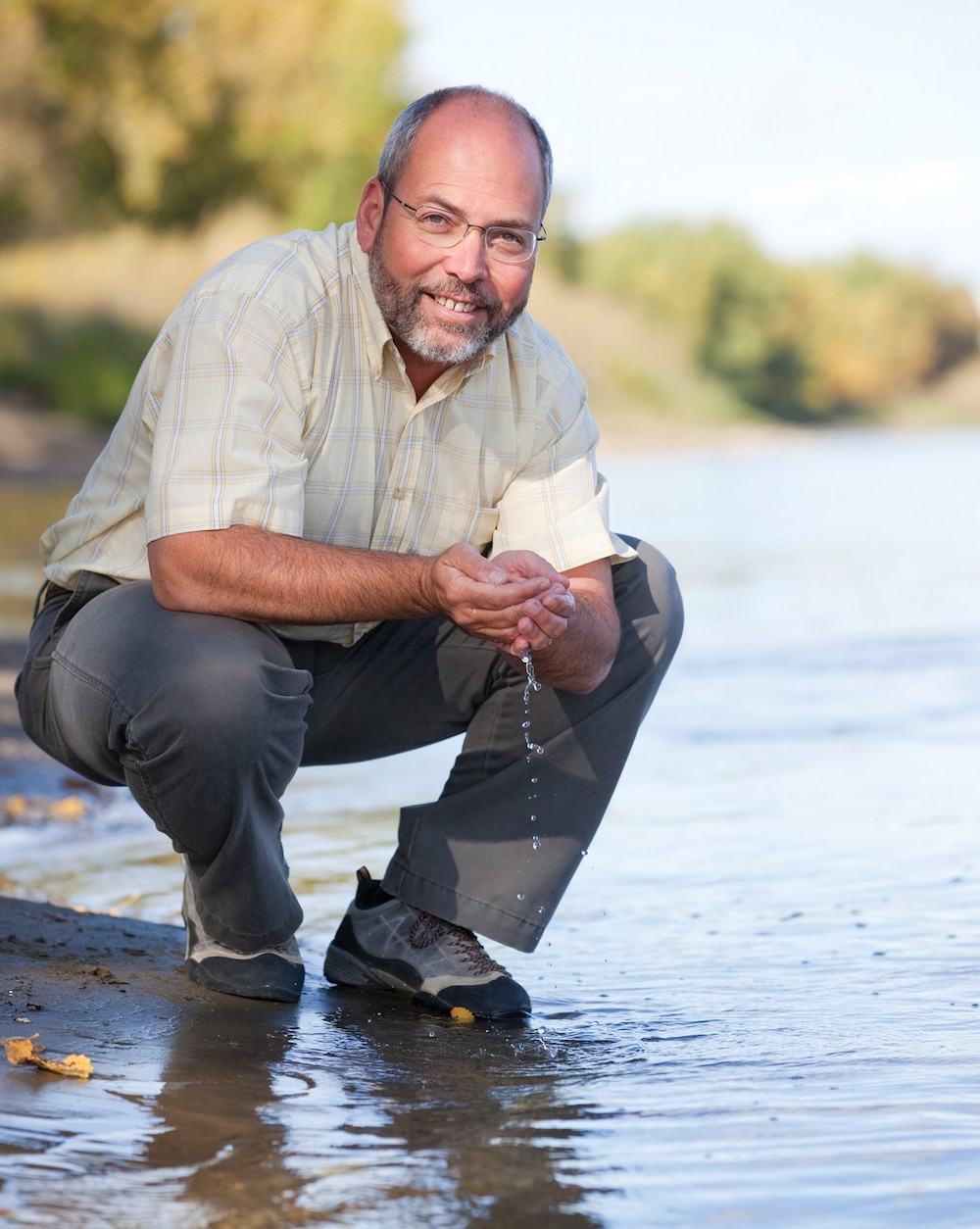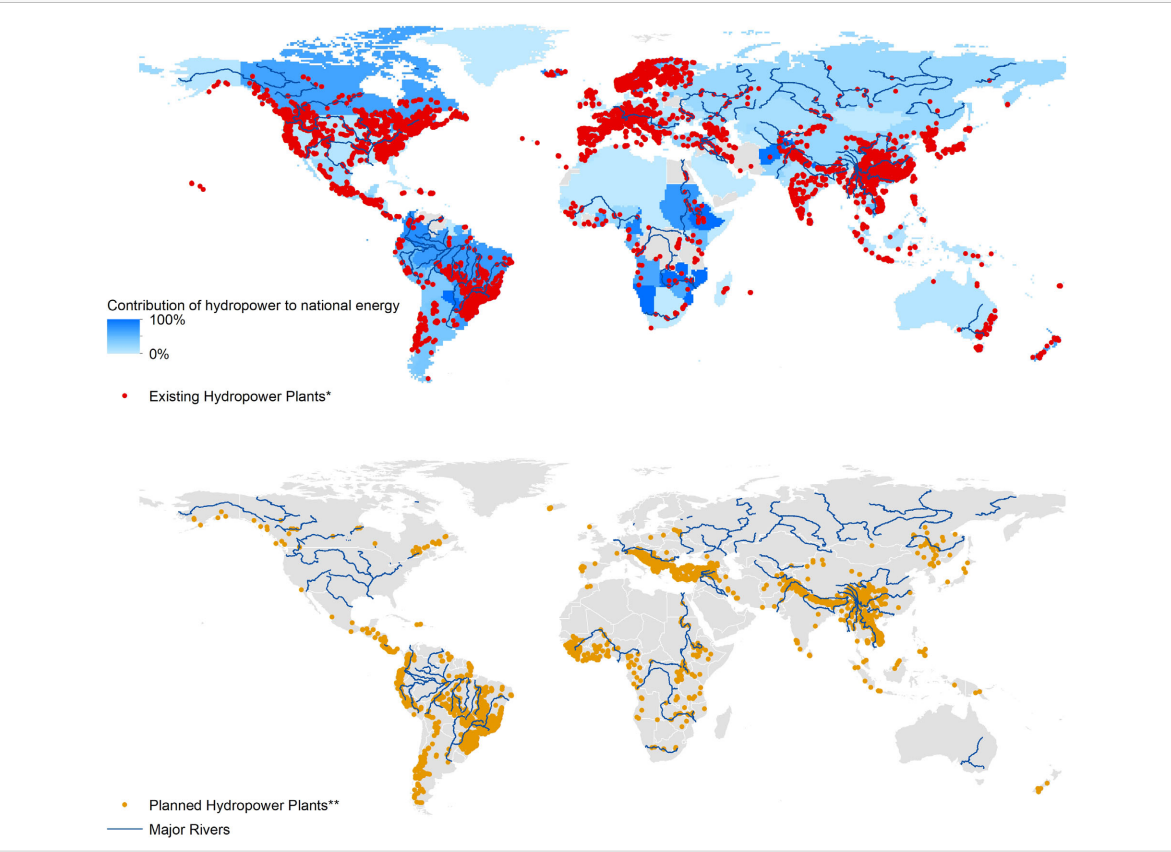Articles Menu

Mar. 4, 2024
As the climate crisis increases demand for low-carbon energy, water-driven turbines sit high on the list. Hydro power already is the world’s largest source of renewable electricity (though dams eventually must be rebuilt). The International Energy Agency calls hydro power “the forgotten giant of clean electricity” as it projects global production to double to meet net-zero emissions targets by 2050.
But at the heart of such expectations lives a conundrum. Climate change is drying up the reliably ample sources of water that hydro power depends upon. It is depleting glaciers. It is reducing snowmelt. It is increasing flood and drought extremes. And it is accelerating water evaporation and demand. (As it gets hotter, we drink more and draw on more electricity in the form of air conditioning.)
“People forget that hydro power is snowmelt and vastly reduced snowpacks means vastly reduced reservoirs,” notes John Pomeroy, Canada Research Chair in water resources and climate change. “It wasn’t anticipated.”
Even Saskatchewan, which generates 16 per cent of its electricity from hydro, saw that power source drop 30 per cent below the median. Coal- and gas-fired stations made up the difference.
The lesson? Every water crisis is an energy crisis and vice versa.
BC Hydro illustrates the scale of the challenge. The drought and heat of 2023 left the utility with a major water shortage. “Water inflows to the system for the six months ended Sept. 30, 2023, were significantly below average and lower than the same period in the prior fiscal year,” noted the utility in its second quarterly report. It added: “The below average water inflows were due to below average 2022-23 snowpack and persistently dry conditions across BC Hydro’s basins over the summer and start of fall.”
In other words, the utility’s main reservoirs in the Peace River region and Columbia basin suffered significant water depletions. And the two Arrow Lakes that bulge the Columbia River have experienced a major drop in water levels, leaving fish, boats and docks suspended on dry land.
As a result, BC Hydro had to buy and import more expensive power from Alberta and the United States, a reason the utility reported a $1.6-billion decline in net trade income last year.
Richard McCandless, a former public servant who keeps a critical eye on the utility, laid out the consequences:
No. 1: “There will be serious repercussions for the government’s efforts to mandate the use of more clean electricity to meet its net-zero emissions objective” if these conditions persist or worsen.
No. 2: “These conditions will also drive higher domestic rates because higher-cost imported electricity will be required to meet domestic demand.”
Manitoba Hydro faces deep trouble as well. The Churchill, Winnipeg and Saskatchewan rivers, from which the utility draws its power, are running low or approaching historic droughts. Manitoba Hydro forecasts total hydraulic generation for 2023-24 to be about 23 per cent below what it expected “due to unfavourable precipitation.” Which translates to a $190-million net loss in the current fiscal year for the utility. As a result, the new NDP government shelved its plans to lower electricity prices.
To cope with the drought, Manitoba Hydro fired up its gas-fuelled power station in Brandon. It’s meant to run only during peak cold spells but has been burning fossil fuels since October. Therefore, “fuel and power purchased increased significantly due to drought conditions experienced in the summer and fall of 2023,” Manitoba Hydro reported.
What does the future hold for Manitoba’s energy grid? A 2022 study on climate change’s impacts on water supply and hydro power generation in northern Manitoba warned that “the historical operation and infrastructure within the Lower Nelson River Basin may be vulnerable under extreme climates,” and that an “increase in uncertainty and extremes under future climates” will pose an operational challenge for the utility.

Hydro-Québec also encountered the realities of climate change in 2023. Paltry snowpacks led to a poor spring runoff, which generated low water levels throughout northern Quebec where the utility operates its massive water engineering projects.
CEO Michael Sabia recently explained to the Montreal Gazette, “The issue essentially is that there wasn’t enough snow and rain in the places where we need it.”
As a precautionary measure, the utility reduced electricity exports to make sure it could meet local demands, but that meant the company lost half a billion dollars last year.
Drought isn’t just crimping hydro power in Canada. A recent World Wildlife Fund study warned that “approximately 26 per cent of existing hydro power dams and 23 per cent of projected dams are within river basins that currently have medium to very high risk of water scarcity” and that “75 per cent of existing dams and 83 per cent of projected dams are within river basins with medium to very high risk” for floods.
Another study projecting into the period from 2040 to 2069 predicts power production drop-offs for up to three-fourths of the world’s hydro power plants unless new “plant efficiencies” can be found.

In southern Africa the Kariba Dam, which provides half the electricity for Zambia and Zimbabwe, sits at its lowest level since its 1959 construction. A drought and heat wave in China’s Sichuan province last year reduced hydro power by 50 per cent, stranding electric cars. Diminishing reservoirs in Spain, Portugal and Austria caused hydro production to significantly drop. Among the hardest-hit countries, Italy, Spain and France produced 36, 33 and 24 per cent less hydro power, respectively, compared with 2021. In drought-gripped California, hydro power decreased from providing 13 per cent to six per cent of the state’s total power supply.
Drought in some parts of the world also has dented nuclear production, which requires a lot of water for cooling.
Some experts peer into the past and find evidence of resilience. One study by engineers calculates that although drought will deplete many specific reservoirs, the entire western fleet of dams has so far managed to “sustain four-fifths or more of its typical annual generation” since the 1900s during historic droughts. But scientists know that before that period areas of the West have experienced drier and longer drought cycles. And we likely now face droughts magnified by intensifying climate change and engineered landscapes made more fragile by the loss of native forests, grasslands and wetlands.
In fact, the implications for the reliability and cost of hydro in the future are profound. Given that hydro power supplies one-sixth of global electricity generation, climate change could substantially curb or impede that low-carbon supply significantly with a cascade of consequences, including more reliance on fossil fuels. :
It also means that billion-dollar plans to invest in the so-called hydrogen economy — a parade that B.C. wants to lead — might be moot. B.C.’s government, for example, proposes to create hydrogen through a process that depends on hydro power, and export the gas to Japan and California. But it takes nine tonnes of water to make one tonne of “green” hydrogen.
U.S. researcher Mark Jacobson has famously proclaimed that it would be feasible and cheap to provide all North America’s energy needs with hydro, wind and solar by 2050. But his calculations assume a 10-fold increase in hydroelectric dams. Some experts are dubious that goal can be reached.
Not only does drier weather pose a challenge, but one group of researchers looked at Jacobson’s modelling and concluded that his hydro power growth estimate is vastly inflated, largely because the world’s best locations had all been dammed.
The researchers called for prudence and reality: “Policymakers should treat with caution any visions of a rapid, reliable and low-cost transition to entire energy systems that relies almost exclusively on wind, solar and hydroelectric power.”
In a recent landmark paper, energy analyst David Hughes warned that the road to net zero by 2050 will be “daunting.” The situation facing hydro producers, the cornerstone of any transition in Canada, underscores his assessment.
Hughes told the Tyee that “not only did B.C., with all its hydro power, have to import 18 per cent of its electricity in 2023 because of drought,” but it has had to resort to net power imports in seven of the last 15 years. He suspects that the climate crisis will accelerate that trend.
“Given the scale of the challenge presented by emissions reduction and the fact that existing non-emitting sources like hydro may become less abundant, society must recognize that there will be less energy available in the future,” warned Hughes.
What could minimize the shock? Investments in efficiency and conservation coupled with behavioural change, advised Hughes.
For that to happen, however, we as a society will have to begin seriously conducting a long-overdue political discussion about how to make conserving energy our top priority in a fast-changing climate.
[Top photo: BC Hydro’s Revelstoke hydroelectric dam spans the Columbia River. Drought forced the utility to import expensive power from Alberta and the US in 2023. Photo via Shutterstock.]